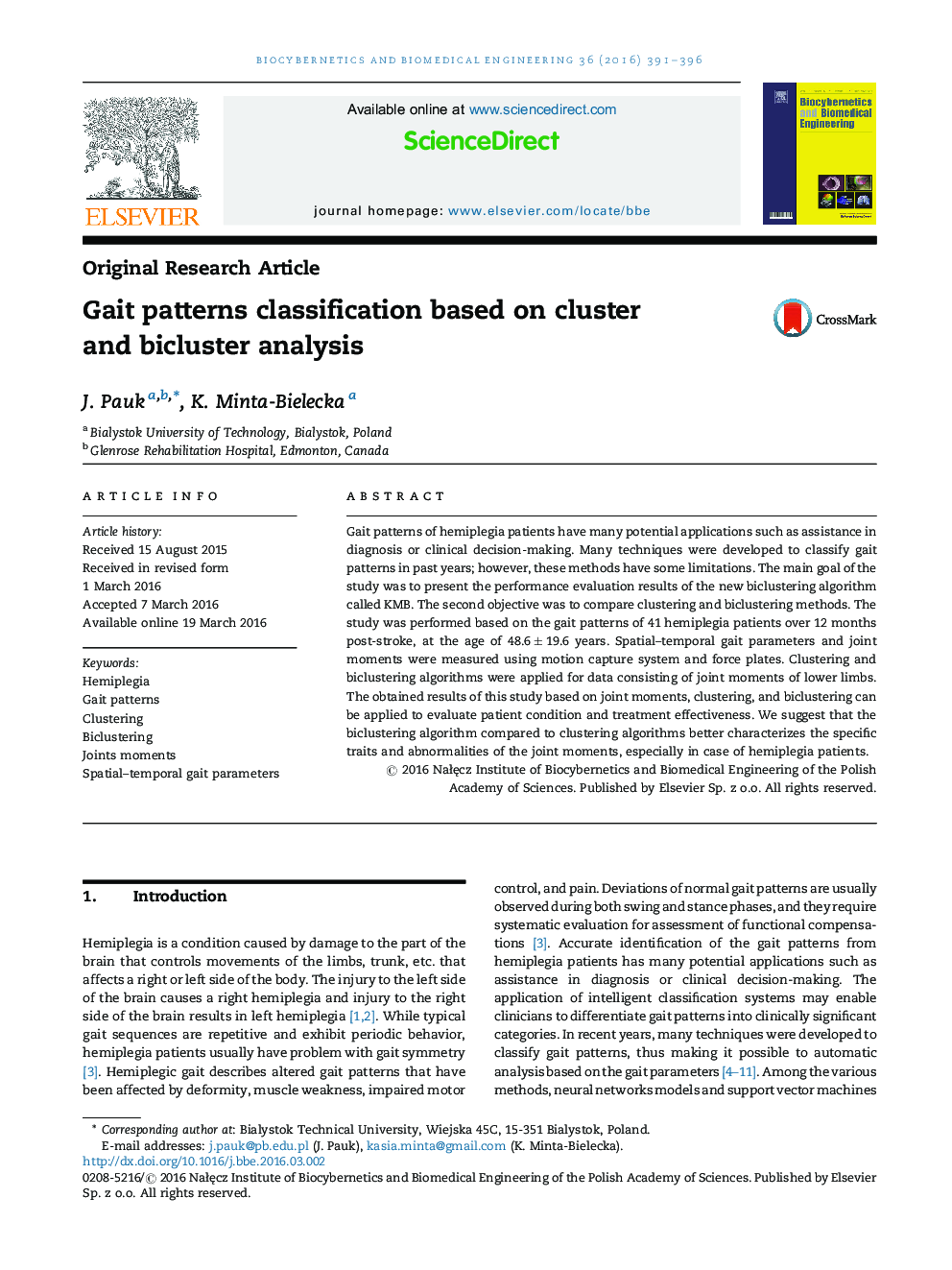| کد مقاله | کد نشریه | سال انتشار | مقاله انگلیسی | نسخه تمام متن |
|---|---|---|---|---|
| 5151 | 343 | 2016 | 6 صفحه PDF | دانلود رایگان |
Gait patterns of hemiplegia patients have many potential applications such as assistance in diagnosis or clinical decision-making. Many techniques were developed to classify gait patterns in past years; however, these methods have some limitations. The main goal of the study was to present the performance evaluation results of the new biclustering algorithm called KMB. The second objective was to compare clustering and biclustering methods. The study was performed based on the gait patterns of 41 hemiplegia patients over 12 months post-stroke, at the age of 48.6 ± 19.6 years. Spatial–temporal gait parameters and joint moments were measured using motion capture system and force plates. Clustering and biclustering algorithms were applied for data consisting of joint moments of lower limbs. The obtained results of this study based on joint moments, clustering, and biclustering can be applied to evaluate patient condition and treatment effectiveness. We suggest that the biclustering algorithm compared to clustering algorithms better characterizes the specific traits and abnormalities of the joint moments, especially in case of hemiplegia patients.
Journal: Biocybernetics and Biomedical Engineering - Volume 36, Issue 2, 2016, Pages 391–396
